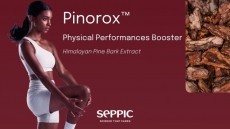Review offers ‘economic and environmentally friendly’ approaches to turn citrus-industry waste into nutrition ingredients

However, citing a 2007 study published in Food Chemistry, industrial waste from citrus processing (when turning the fruit into flavoring agents, jams, marmalades, or fresh juice) amounts to more than 40 million tons worldwide annually, and the amount of residue obtained from the fruits account for around 50% of the original whole fruit mass.
In their present review titled Converting citrus wastes into value-added products: Economic and environmentally friendly approaches, published in the journal Nutrition, the researchers used secondary research to propose different methods to turn this waste into value-added products and offered an “extensive record of popular as well as recently developed and advanced techniques of waste reuse, extraction of various compounds, and their applications in various fields.”
The US ranks second in the world with 29% of citrus fruit production (following Brazil’s top spot with 47%), offering an economic opportunity to convert the waste into a value-added product. “Citrus waste is of immense economic value as it contains an abundance of various flavonoids, carotenoids, dietary fiber, sugars, polyphenols, essential oils, and ascorbic acid,” the researchers said in the report.
“The purpose of this review was to describe the potential benefits of citrus byproducts as a source of functional compounds,” they added.
Phenolic and flavonoid content of citrus waste
The researchers found that citrus fruit waste is “rich in biologically active compounds including natural antioxidants such as phenolic acids and flavonoids,” the latter of which are an important class of bioactive compounds because of their versatile antioxidant, ant-carcinogenic, and anti-inflammatory properties.
The two groups of flavonoids commonly found in citrus fruits are polymexthoxylated flavones and glycosylated flavones (luteolin, apigenin, and diosmin glucosides). Though both peels and seeds are important sources of phenolic compounds, the researchers argued that “the content is richer in peels than in seeds.”
Extracting phenolic acids from peels, avoiding landfill and water system pollution
According to the researchers’ findings, the most common methods of disposing citrus production solid waste are composting, anaerobic digestion, incineration, thermolysis, and gasification. When disposed conventionally, the oils in its peel adversely affect fermentation and bacterial decomposition in landfills, meaning “extraction of oil from peel waste streams not only provide useful byproducts, but also contribute to pollution abatement.”
Techniques that manufacturers have started to use to extract phenolic from citrus peels include reflux, shaking, stirring, and ultrasonic extraction. Extraction methods such as supercritical fluid extraction, ultrasound extraction, controlled pressure drop process, and subcritical water extraction consumed less solvent and energy.
The researchers argued that microwave-assisted extraction for phenolic acids from peel showed “better performance in terms of higher yields and confirmed by different antioxidant assay systems.”
They added that the extraction method offers “considerable savings in processing time, solvent consumption, and energy” as well as ensuring “ease, rapidity, less solvent consumption, higher extraction rate, energy savings, and better product yield with lower cost.”
Source: Nutrition
Published online ahead of print, http://dx.doi.org/10.1016/j.nut.2016.09.006
"Converting citrus wastes into value-added products: Economic and environmently friendly approaches"
Authors: K. Sharma et al
















